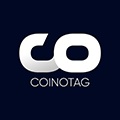The Rise of NFTs: Shaping the Next Era of Digital Ownership
NFTs, or Non-Fungible Tokens, are reshaping how we view digital ownership. They provide a way to authenticate and prove ownership of digital assets through blockchain technology. This innovation promises transparency and trust in transactions.
NFTs have gained attention for their ability to turn digital art, music, and even tweets into unique, tradable items. This has created new markets and opportunities for creators and collectors alike. Digital assets become valuable and irreplaceable, opening up possibilities never seen before. Blockchain technology ensures these assets are unique and verifiable.
The future of NFTs extends beyond art and collectibles. They hold potential in real estate, gaming, and more, revolutionizing various industries. This technological breakthrough is poised to change how we perceive and handle ownership in the digital world.
Key Takeaways
NFTs authenticate digital ownership using blockchain.
They create new markets for digital art, music, and more.
Future applications of NFTs extend beyond collectibles.
The Emergence of NFTs
NFTs have significantly changed how digital ownership and authenticity are managed, providing unchangeable proof of ownership and unique opportunities across various industries.
Defining Non-Fungible Tokens (NFTs)
Non-fungible tokens (NFTs) are unique digital assets that use blockchain technology to verify ownership and authenticity. Each NFT is distinct and cannot be exchanged for another on a one-to-one basis like cryptocurrencies. They can represent digital art, music, videos, and even virtual real estate. Blockchain ensures the originality of these assets, making them highly valuable and impossible to counterfeit.
NFTs offer artists and creators new ways to monetize their work by ensuring they retain ownership rights. This technology also allows for royalties on secondary sales, which benefits creators in the long term.
Historical Development of NFTs
The concept of NFTs emerged with the introduction of blockchain technology. The first significant NFT projects began around 2017, with CryptoKitties gaining attention for its digital collectible cats. These early NFTs utilized the Ethereum blockchain, which allowed the creation and trading of digital assets with unique attributes.
By 2021, NFTs saw a massive surge in popularity, driven by high-profile sales like Beeple's digital artwork, which sold for $69.3 million at Christie's—this period marked a broader acceptance and integration of NFTs into mainstream culture, showcasing their potential beyond digital art.
Early Success Stories
Early success stories in the NFT space highlighted the immense potential for creators and investors. One notable example is Beeple’s artwork "Everyday: The First 5000 Days," which became one of the most expensive digital art pieces ever sold. Another example is the success of CryptoPunks, a series of 10,000 unique characters fetching millions in sales.
These early successes demonstrated the lucrative business opportunities within the NFT market. They also helped attract more artists, musicians, and even sports franchises to explore NFTs, expanding the market and creating various new digital ownership models.
Each success story highlights the unique ability of NFTs to provide proof of authenticity and ownership in the digital age, transforming how value is perceived and exchanged online.
Technological Foundations
NFTs rely on several critical technological components to function effectively, including blockchain technology, smart contracts, and interoperability standards like ERC-721. Each element plays a crucial role in enabling secure, verifiable digital ownership.
Blockchain Technology Explained
Blockchain is a decentralized ledger technology that underpins NFTs. It provides a secure and transparent way to record transactions. Each transaction is a block linked to previous blocks, creating a chain. This ensures data integrity and prevents tampering.
A blockchain consists of a network of nodes, each maintaining a copy of the ledger. When a transaction occurs, nodes validate and record it. This decentralization avoids single points of failure, making the system robust. The most commonly used blockchain for NFTs is Ethereum, but others like Flow and Tezos are also gaining popularity.
Smart Contracts as the Backbone
Smart contracts are self-executing contracts with the terms directly written into code. They reside on the blockchain and automate processes, such as transferring ownership or enforcing rules without intermediaries. In the context of NFTs, smart contracts manage the creation, exchange, and rights of digital assets.
They ensure that once an NFT is sold, the transfer completes automatically, and the artist might even receive a royalty on secondary sales. This automation reduces the need for trust and manual oversight. Smart contracts provide the reliability and efficiency necessary for widespread NFT adoption.
Interoperability and Standards (e.g., ERC-721)
Interoperability is crucial for NFTs, allowing them to be used across different platforms and systems. Standards like ERC-721, built on the Ethereum blockchain, facilitate this by defining common rules for NFTs. ERC-721 ensures that NFTs are unique and cannot be exchanged one-for-one like cryptocurrencies.
This standard includes methods for transferring tokens, checking ownership, and querying token metadata. Such standards make it easier for developers to build applications and for users to buy, sell, and trade NFTs. By establishing a common framework, ERC-721 and similar standards help drive the ecosystem's growth and innovation.
Digital Ownership and Rights
Digital ownership and rights with NFTs are transforming how we prove ownership, manage intellectual property, and impact creators and collectors. Understanding these changes is crucial in navigating this new landscape.
Proof of Ownership
NFTs offer an unchangeable proof of ownership for digital assets. Each NFT is backed by blockchain technology, ensuring that the ownership record cannot be altered or forged. This transparency builds trust between buyers and sellers.
Transparency: The blockchain ledger is open for anyone to inspect, providing clear evidence of who owns what.
Security: Since records are distributed across numerous nodes, tampering is nearly impossible, providing a high level of security for digital assets.
Longevity: Ownership records remain intact over time, regardless of how often an asset changes hands.
This proof of ownership is particularly valuable for digital art, as it helps verify that a piece is genuine and original. It also opens up new revenue streams for artists by ensuring that each sale is authenticated.
Intellectual Property Considerations
NFTs introduce new challenges and opportunities in the realm of intellectual property (IP). When someone purchases an NFT, they buy the ownership of a digital item, but they may not own the IP rights unless explicitly transferred.
Licensing Agreements: Often, the sale of an NFT is accompanied by a license that specifies how the digital asset can be used. This can include restrictions on commercial use or reproduction.
Creators' Rights: Artists and creators must understand the implications of IP when minting and selling NFTs to protect their rights. They might choose to retain certain rights while allowing the buyer limited use.
Legal Framework: The evolving legal landscape around NFTs and IP rights requires continual monitoring. Jurisdictions may differ in handling IP rights for digital assets, creating a complex field for artists, collectors, and legal professionals.
This area is still developing, and those involved need to stay informed about current practices and legal changes.
Implications for Creators and Collectors
NFTs provide a new way for creators to monetize digital works. Royalties can be embedded into the NFT, ensuring that creators earn a percentage every time the asset is resold. This can lead to ongoing revenue streams long after the initial sale.
New Revenue Models: Artists can benefit from smart contracts that automatically enforce royalty payments on secondary sales.
Global Market Access: NFTs enable creators to reach a global audience without relying on traditional galleries or intermediaries.
Collector Incentives: Collectors benefit from owning unique digital items that can be appreciated. The secure and transparent nature of blockchain adds confidence in the authenticity and legitimacy of their acquisitions.
For collectors, NFTs offer an opportunity to invest in digital assets that may appreciate over time. The unique nature of each NFT ensures that collectors can own exclusive pieces of digital history.
NFTs are reshaping how digital ownership and rights are managed, presenting new possibilities and considerations for everyone involved.
Market Dynamics and Valuation
NFT markets have grown rapidly and are influenced by various factors such as digital ownership verification, artist monetization, and market demand. High-value sales of notable NFTs further showcase how dynamic and complex this market can be.
Understanding NFT Markets
NFTs, or non-fungible tokens, represent unique digital assets. Their markets are decentralized, meaning they operate on blockchain platforms like Ethereum. These markets allow users to buy, sell, and trade digital assets ranging from art to virtual real estate.
Key NFT marketplaces include OpenSea, Rarible, and SuperRare. The decentralized nature ensures that transactions are transparent and secure. Users have verifiable proof of ownership. This added security and transparency have attracted many artists and collectors.
Factors Driving Value and Price
Several factors affect the value and price of NFTs. First, rarity plays a crucial role. The rarer an item, the more valuable it is. Second, the creator's reputation impacts value. Well-known artists or creators often see higher prices for their work. Third, the utility of the NFT influences its cost. For instance, NFTs that offer additional benefits like access to exclusive events or content can fetch higher prices.
Market trends indicate that consumer interest and digital abundance also contribute. High demand can drive up prices, while oversupply might decrease value.
Case Studies of Notable Sales
Some NFT sales have garnered significant attention due to their high prices. Beeple's "Everyday: The First 5000 Days" is a prime example. It sold for $69 million at Christie's auction, making it one of the most expensive NFT sales to date.
Another example is CryptoPunk #7804, which sold for $7.6 million. These case studies show how NFTs valued by experts can achieve high success rates.
High-profile sales often feature unique, rare, and highly sought-after NFTs. They demonstrate the potential for digital assets to hold substantial value, attracting attention from collectors and investors worldwide.
Use Cases Expanding Beyond Art
NFTs have paved the way for innovations in various fields. Key examples include gaming, virtual reality, real estate, and tokenization, showcasing their versatile applications.
Gaming and Virtual Realities
In the gaming industry, NFTs allow players to own, trade, and sell in-game items. This innovation provides gamers with the ability to have actual ownership of virtual assets. Items like rare skins, weapons, and characters can be sold in secondary markets, adding real-world value to digital collectibles.
Games such as "Axie Infinity" and "Decentraland" have demonstrated how NFTs enhance the gaming experience. Players invest time and money into these games, knowing they can sell their assets later. This dynamic creates a thriving economy within virtual worlds, making gaming not just entertainment but also a potential income source for many.
Real Estate and Tokenization
The real estate sector is embracing NFTs by using them to represent ownership of property assets. Tokenization allows splitting a property into digital tokens, making it easier to buy and sell shares of expensive assets. This concept streamlines the traditional process, reducing the need for intermediaries and making the market more accessible.
Platforms like "Propy" and "RealT" are at the forefront of this revolution. They enable users to buy property fractions, providing liquidity and flexibility in the market. This approach democratizes real estate investment, allowing individuals to participate without needing substantial capital upfront.
Challenges and Controversies
Non-fungible tokens (NFTs) are transforming digital ownership, but they come with their own set of challenges and controversies. Key issues involve environmental impact, fraud, security lapses, and regulatory scrutiny.
Environmental Impact Concerns
NFTs leverage blockchain technology, particularly Ethereum, which operates on a proof-of-work consensus mechanism known for its high energy consumption. Each transaction or minting of an NFT on Ethereum uses a significant amount of power, leading to concerns about carbon footprints.
This has sparked debates over whether the environmental cost outweighs the benefits of secure digital ownership. Critics argue that the sustainability of blockchain technology needs to be addressed, pushing for a shift to more eco-friendly alternatives like proof-of-stake protocols.
Fraud and Security Issues
NFTs, despite their secure blockchain base, are not immune to fraud and security vulnerabilities. Their digital nature makes them a target for hacks and scams. Cases of stolen NFTs, counterfeit digital artworks, and unauthorized sales have surfaced, raising concerns about the security measures in place.
Cyberspace's anonymity can further aggravate these issues, making it difficult to trace and recover stolen assets. Ensuring robust security practices and user education is crucial to reducing these risks.
Regulatory Hurdles
The decentralization of NFTs presents a challenge for regulatory bodies worldwide. Governments are still figuring out how to classify these digital assets for taxation and legal purposes. The lack of clear regulations can lead to legal ambiguities and complications for both creators and buyers.
Questions relating to intellectual property rights and consumer protection also arise. Regulatory frameworks need to evolve to keep pace with the rapid development of NFTs, ensuring fair practices and protecting all stakeholders involved.
These hurdles can slow down the market's growth and adoption, emphasizing the need for cooperation between the industry and regulators.




